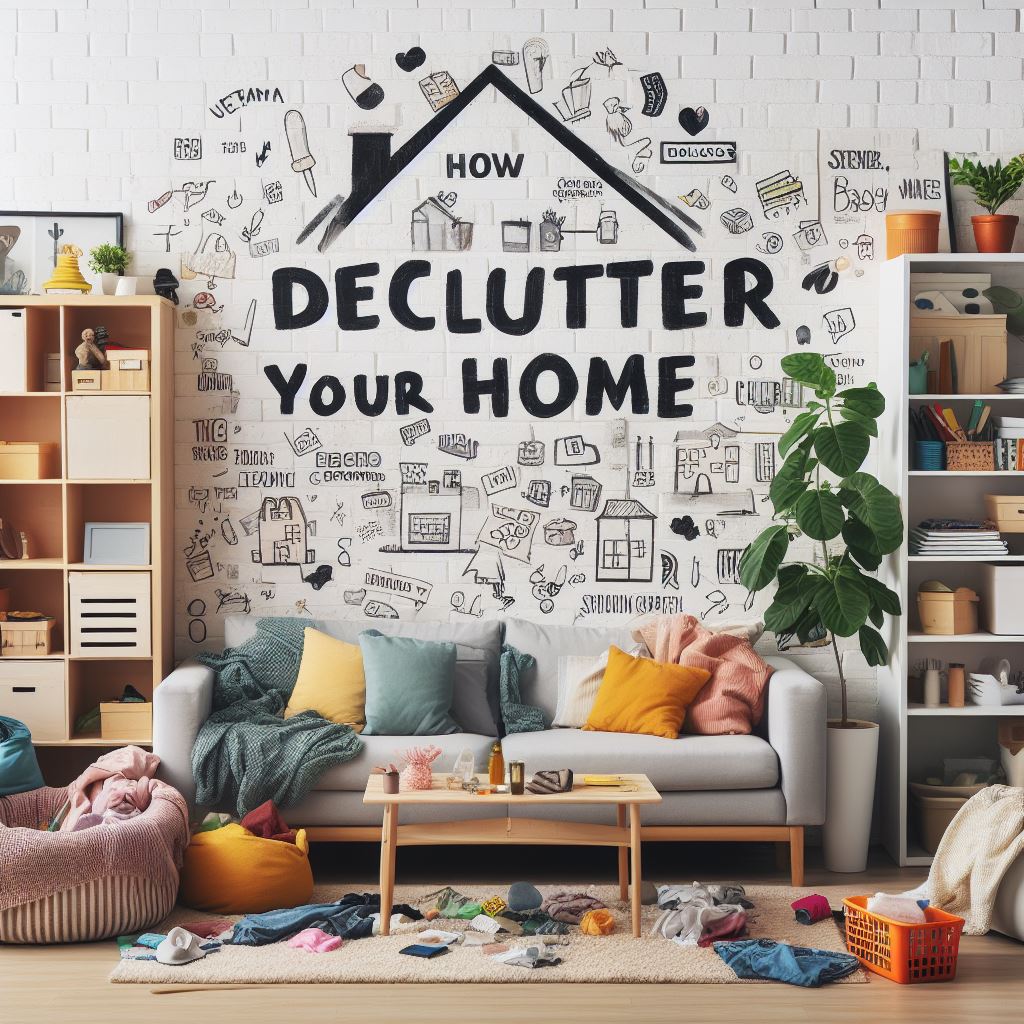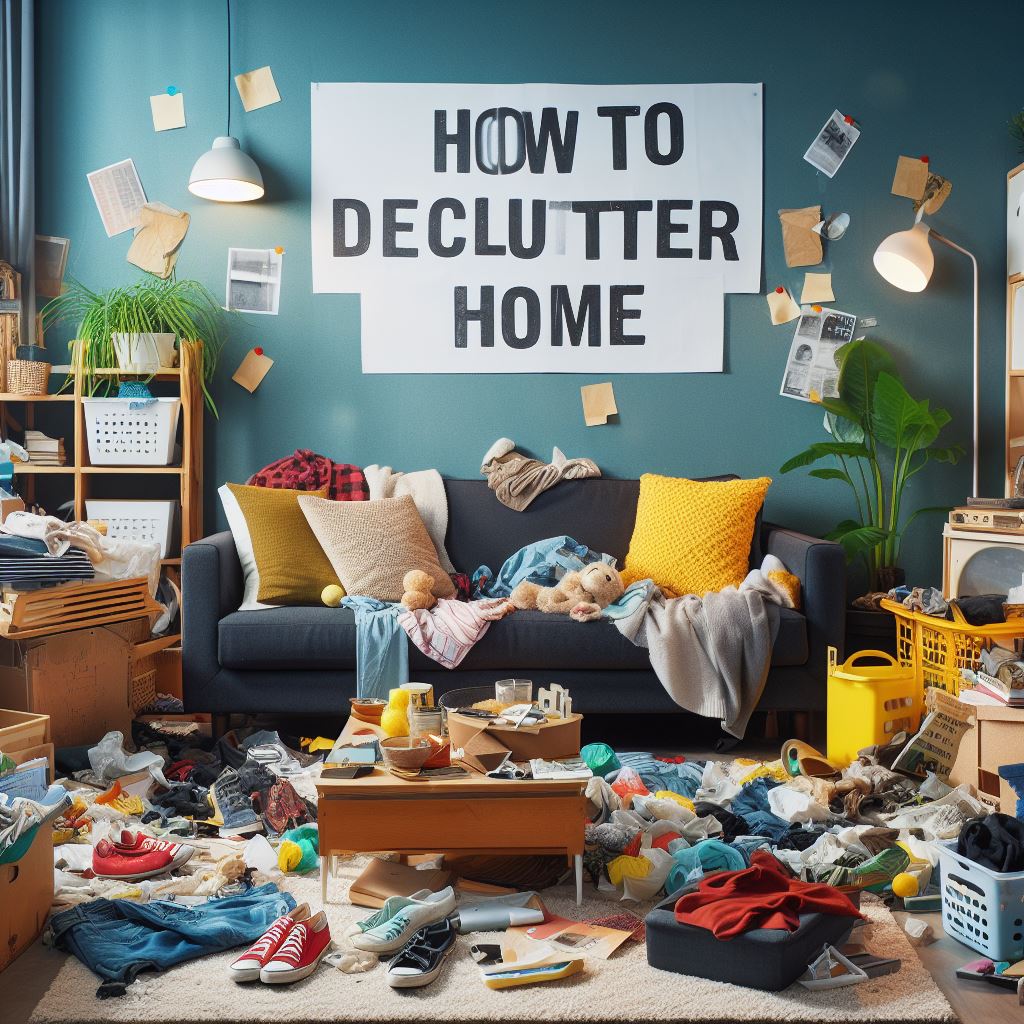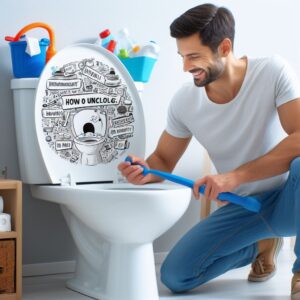Tips on How to Declutter Your Home
Decluttering your home can be a daunting task. The very thought of sifting through years of accumulated belongings can overwhelm anyone. However, with the right approach and a clear plan, you can reclaim your living space and create a more organized, peaceful, and functional environment. In this comprehensive guide, we will take you through the process of decluttering your home step by step, providing you with practical tips, tricks, and expert insights to make this journey not only manageable but also a transformative experience.
Section 1: Understanding the Benefits of Decluttering
Decluttering your home goes beyond just tidying up. It offers a range of benefits that can positively impact your physical and mental well-being. Let’s explore some of these advantages.
Wondering what to do with your old sofa? Explore creative upcycling ideas.
1.1 Enhanced Productivity
A clutter-free space can boost your productivity by reducing distractions and allowing you to focus on the task at hand. When you know where everything is, you save time and effort.
1.2 Stress Reduction
A cluttered environment can lead to stress and anxiety. Decluttering can provide a sense of calm, reducing stress levels and promoting mental clarity.
1.3 Improved Physical Health
A cluttered home can be a breeding ground for allergens and dust. Decluttering can lead to better air quality and a healthier living space.
1.4 Enhanced Creativity
A well-organized space can stimulate your creativity. When your surroundings are clear and organized, you’ll find it easier to think clearly and come up with innovative ideas.
Section 2: The Initial Assessment
Before diving into decluttering your home, it’s essential to take stock of the situation. This step will help you set realistic goals and create a plan tailored to your needs.
Elevate your child’s room with fun and functional bunk beds for kids.
2.1 Define Your Goals
Ask yourself what you want to achieve with this decluttering process. Do you want to create more storage space, make your home more aesthetically pleasing, or simply get rid of unnecessary items?
2.2 Assess Each Room
Take a walk through your home and assess the clutter in each room. Make a list of the areas that require the most attention.
2.3 Gather Your Supplies
To declutter efficiently, you’ll need some basic supplies like trash bags, boxes, and labels. Having everything on hand will keep you on track.

Section 3: Sorting and Categorizing
Now that you’ve assessed the clutter, it’s time to start sorting and categorizing your belongings. This is a crucial step in the decluttering process.
3.1 The Four-Box Method
Begin with four boxes or bins: one for items to keep, one for items to donate, one for items to sell, and one for items to discard. As you go through each room, place items in their respective boxes.
3.2 Be Ruthless
It can be challenging to let go of sentimental items, but it’s essential to be ruthless during this process. Ask yourself if an item truly adds value to your life. If not, it’s time to part ways.
3.3 Organize by Category
When sorting through items, group them by category. This approach will make it easier to see how much you have of each type and help you make informed decisions.
Loft beds: Maximize space and style in your room’s layout.
Section 4: Storage Solutions
Decluttering isn’t just about getting rid of things; it’s also about finding efficient storage solutions for the items you want to keep.
4.1 Invest in Storage Furniture
Consider purchasing furniture with built-in storage, such as ottomans or bookshelves, to maximize space while keeping your belongings accessible.
4.2 Utilize Vertical Space
Install shelves on your walls to make use of vertical space. This can help clear your floors and keep your home looking tidy.
4.3 Drawer Organizers
Use drawer organizers to keep small items like utensils, jewelry, and office supplies in order. This prevents clutter from accumulating in your drawers.

Section 5: Maintaining a Clutter-Free Home
Once you’ve decluttered your home, it’s crucial to establish routines and habits to maintain your newfound sense of order.
5.1 Regular Cleaning
Set aside time for regular cleaning and tidying. This can be as simple as dedicating 15 minutes each day to tidy up, preventing clutter from piling up again.
5.2 One In, One Out Rule
For every new item you bring into your home, consider getting rid of an old one. This will help you maintain a balanced living space.
5.3 Be Mindful of Impulse Purchases
Before buying something new, ask yourself if you truly need it. Avoid impulse purchases that can lead to more clutter.
Find top furniture stores near you for quality home furnishings.
Section 6: The Emotional Journey
Decluttering is not just a physical process; it can also be an emotional one. Let’s explore the emotional aspects of decluttering.
6.1 Letting Go of Sentimental Items
Parting with sentimental items can be tough. Consider taking photos of these items to preserve the memories without the physical clutter.
6.2 Celebrate Your Achievements
Each step of the decluttering process is an accomplishment. Celebrate your progress to stay motivated and positive.
6.3 Seek Support
If decluttering becomes overwhelming, seek support from friends, family, or even a professional organizer. They can provide valuable guidance and motivation.
Section 7: Conclusion
In conclusion, decluttering your home is a transformative journey that offers numerous benefits, from reducing stress to enhancing productivity. By understanding the process, setting clear goals, and being diligent in your efforts, you can create a clutter-free, organized, and peaceful living space.
Remember, decluttering is not a one-time task; it’s an ongoing commitment to maintaining a clutter-free home. As you embark on this journey, keep in mind the emotional aspects and seek support when needed. The effort you put into decluttering will undoubtedly enhance your quality of life and well-being.
So, are you ready to take the first step towards a clutter-free home?
Let’s start decluttering today!





